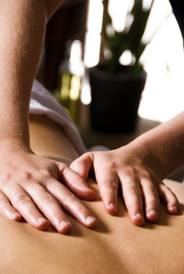Polymyalgia Rheumatica
- Home
- Whole Body Conditions
- Common Ailments
- Polymyalgia Rheumatica
Polymyalgia Rheumatica (PMR) is part of the rheumatalogical group of diseases. This means it is associated with inflammation in the body. PMR usually begins with pain and stiffness in the shoulders, neck and hips.
It can come on suddenly or over a period of time. Sometimes it can be triggered by a stressful event in the patient’s life.
There is no specific test for PMR but special blood tests usually reveal high level of certain ‘inflammatory markers’ that indicates inflammation is active within the patients body.
PMR usually lasts from 1-3 years from the beginning of the first symptoms but most patients are expected to make a good to full recovery in that time.
PMR affects the large muscle groups in the body like the quadriceps (in the thigh) and trapezius (in the neck and shoulders). The muscle fibres become inflamed leading to pain, which is worse in the mornings. The fibres can then become weak through damage from the inflammation and through disuse as the patient finds its harder to move and exercise normally.
Patients with PMR are also more likely to have an associated condition known as Giant Cell (or Temporal) Arteritis, which can be more serious than PMR. In these cases the arteries supplying the face, head and eyes become inflamed which can lead to severe face and head pain, visual disturbances and possible damage to the eye.

There is no known cause for PMR although there may be an inherited link in families where other members have inflammatory disorders. There may also be a connection with some viruses producing a reaction within the immune system, which may lead to PMR.
There are certain groups of people who seem to be affected by PMR
- It is rare in people under 50 and usually affects people over 65 years of age
- 1 in 1000 people over 50 develop it every year
- Women are 2-3 times more likely to be affected.

s.
- Pain and stiffness in the muscles around the neck, shoulders and hips
- Stiffness in the morning, or following a period of inactivity
- Difficulty turning over in bed and getting out of bed in the morning
- Difficulty washing or brushing your hair, cleaning your teeth or shaving
- Tiredness, making you feel irritable and depressed
- Flu-like symptoms such as fever
- Weight loss
The steroid Prednisolone is usually used to help reduce the inflammation in the muscles helping improve the pain and stiffness. There are side affects associated with steroids which the Consultant and physiotherapist can help monitor.
It is very important that patients with PMR try and maintain a healthy diet and exercise. Exercises to begin stretching tight and inflamed muscles are essential, as patients may have lost joint movement and flexibility, which only exacerbates the painful muscles. These exercises must be carefully prescribed so as not to flare up the PMR symptoms. Gentle strengthening exercises may be appropriate in some cases.
Physiotherapy techniques to manually stretch the muscles and overlying fascia often assist with the pain reduction and improved flexibility. This is often beneficial when the patient is trying to reduce the level of steroids they are taking.
Acupuncture is also helpful at reducing the muscle tension and pain and helping with the other symptoms of PMR like tiredness, anxiety and general malaise. Patients who respond well to acupuncture may find they require less steroid medication, which is helpful in reducing the side effects.

